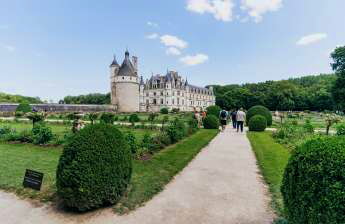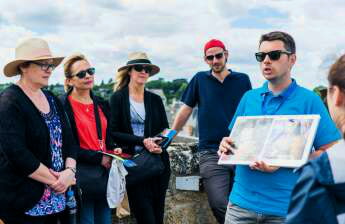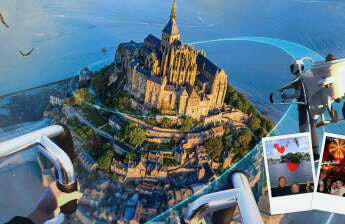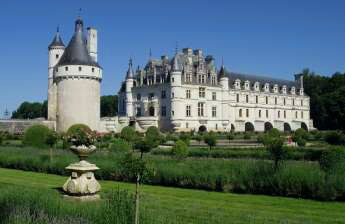Visiting the Chteau de Chambord can be a truly special experience. This gorgeous French castle has a long history, beautiful gardens, and amazing architecture. Whether you're interested in touring the castle or just looking for a great place to stay, you'll find the information you need to make it an unforgettable trip.
History
Located in the Loire Valley, the Chateau de Chambord is one of the most beautiful and famous castles in the world. Its symmetrical facade, which is 230 meters long, is flanked by four massive towers. The towers have richly sculpted gables.
The central keep, which dominates the facade, has a 105-foot lantern tower that is crowned with a fleur-de-lys. The tower is supported by arches. There are also roof terraces with shell-shaped domes. The exterior of the castle is surrounded by a 13,600-acre National Hunting Reserve.
The interior of the castle is stunning. It is said to be one of the best examples of French Renaissance architecture. Many of the architectural elements were inspired by Leonardo da Vinci. The main attraction is a double-helix staircase that spirals around the inside of the building.
Architecture
Despite its storied history, the Architecture of Chteau de Chambord is still a mystery. It is one of the most famous landmarks in France. The structure is one of the most popular attractions in the Loire Valley. It was built in the Renaissance style, and is a masterpiece of French architecture.
Chateau de Chambord is the largest royal castle in the Loire Valley. It was constructed between 1519 and 1547 CE. The original building was planned as a hunting lodge. But it was later modified into a residence. It has a number of innovative design features, including a double helix stairway. It also has a large number of rooms.
The architecture of Chambord is a unique blend of medieval and Renaissance styles. In fact, the king's emblem and salamanders are painted on the ceiling of the main chamber. The roof has walkways and terraces that provide views of the park around the castle.

Gardens
Located in the Loire Valley, Chambord is one of the most popular tourist attractions in France. The grounds are surrounded by beautiful forests and there are several ways to explore them. There are also a lot of interesting architectural features, such as the famous double helix staircase.
The estate is one of the largest in France. The gardens are filled with thousands of trees, shrubs and plants. It's also home to one of the biggest enclosed nature parks in Europe. There are also four kilometres of hiking and cycling trails. In addition, the staff has created an organic farm for fruit and vegetable growing. The property also offers boat and all terrain vehicle tours.
You can take a tour of the property, which departs three times a day. The tour takes about an hour and a half. It includes an audiovisual presentation to learn more about the history of the estate. It also focuses on the French Revolution and Leonardo da Vinci. The tours are available in both English and French.

Relais de Chambord
Located in the Loire Valley, the chateau of Chambord is one of the most beautiful castles in France. It is also a UNESCO World Heritage Site. You can learn more about the history of the castle by visiting the tour center.
The architecture of the Chambord is an amalgamation of medieval and Italian Renaissance styles. It was inspired by the work of Leonardo da Vinci. The building is surrounded by the largest wall in France. It features a beautiful rooftop that is covered with turrets, cupolas and dormers.
The roof of the castle is a great place to get a bird's eye view of the entire property. You can see the bell towers and chimneys. There are several secret passages and staircases. The roof is the crowning glory of the castle.
Accessibility
During your visit to the Chateau de Chambord, you may ask yourself: "Is there accessibility to this monument?" It is important to know that you can access the museum without problems. The chateau offers free admission to people with disabilities. You can also benefit from an electric cart rental and loan of mobility equipment.
The double helix staircase in the chateau was imagined by Leonardo da Vinci. It is similar to the spirals found in DNA.
The museum's reception desk is low and accessible. In addition, there are accessible toilets and an elevator. There is an audiovisual presentation that explains the history of the castle. It is also translated into four languages.
The Musee de la Vie d'Autrefois is also fully accessible. The museum features an exhibition of antique carriages. There is an exterior access ramp and an elevator. It also has an audiovisual room that streams a film in five languages.







